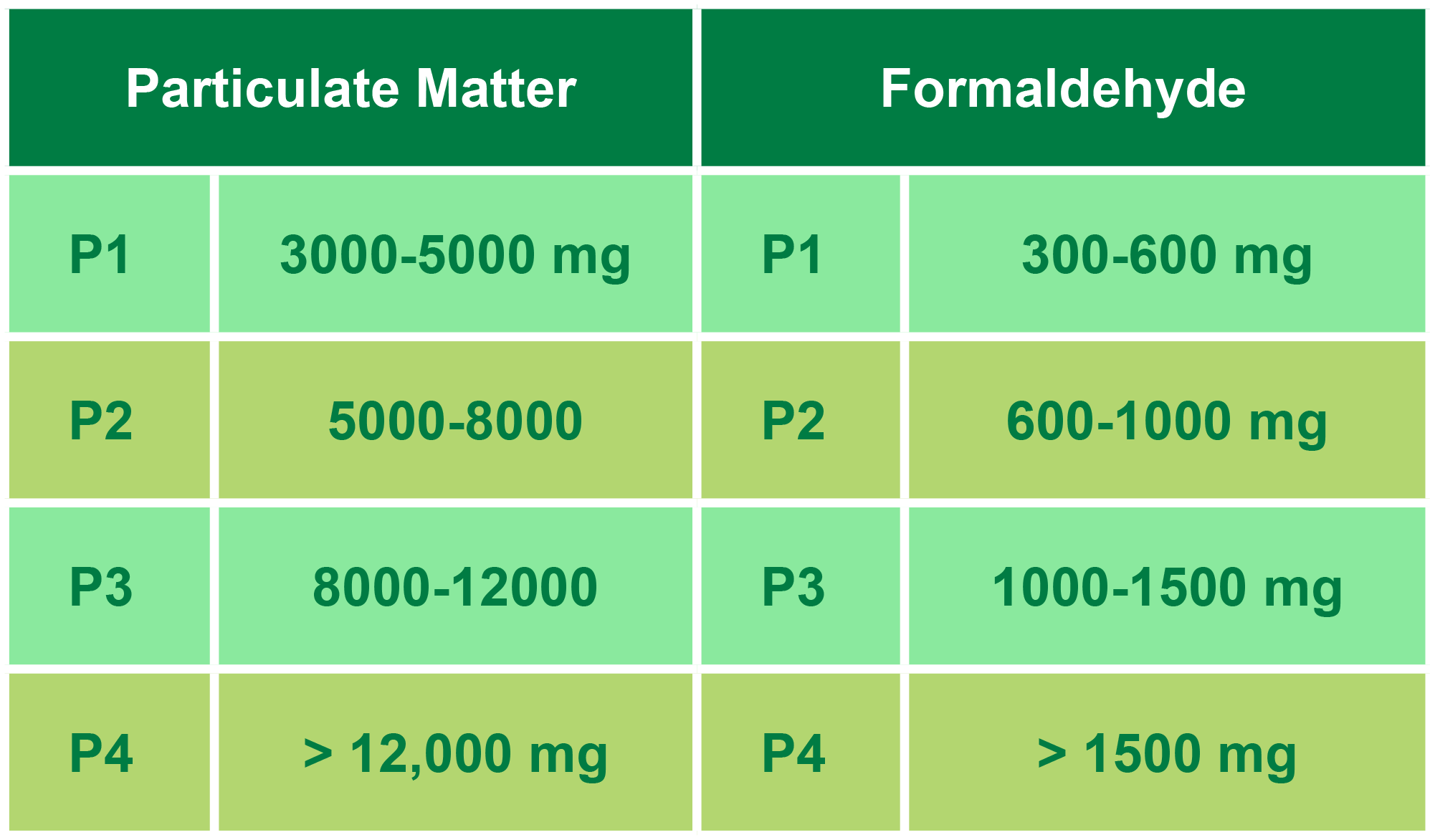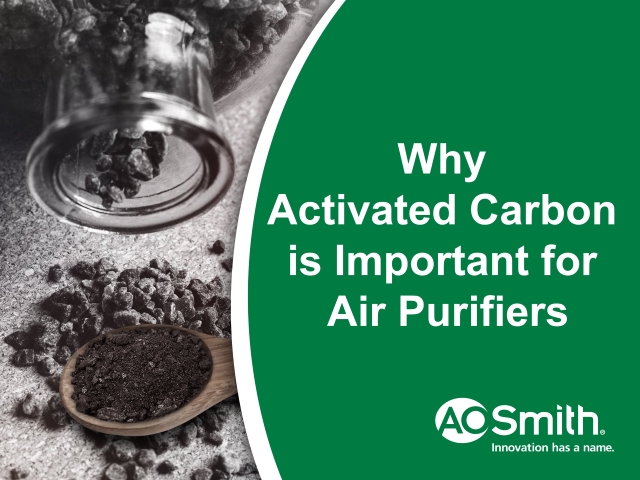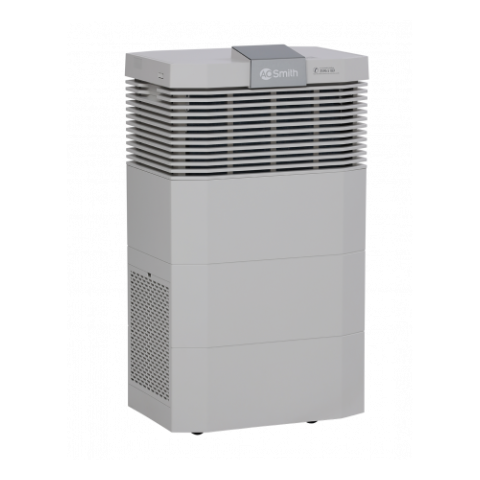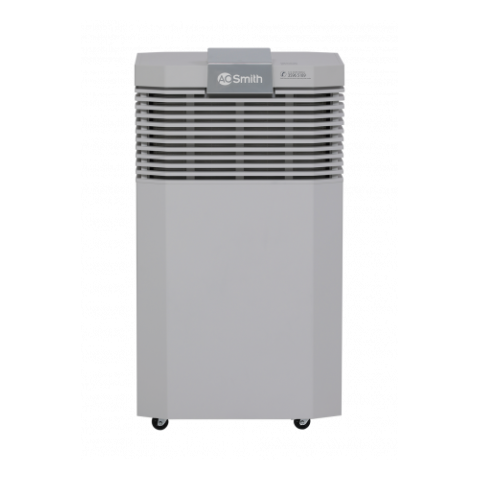Activated Carbon is used in high quality air purifiers because of its effectiveness in removing harmful gases not addressed by HEPA filters. We look at the importance of activated carbon in air purification for homes and offices.
What is Activated Carbon?
The Activated Carbon filter or charcoal filter was originally called HEGA (High Efficiency Gas Absorption) filter. It was first used by the British Army in chemical warfare to remove gases.
Activated carbon is available mainly in powdered or granular form. Granular Activated Carbon or GAC is commonly used in air filters. These pellets of carbon last much longer than Powdered Activated Carbon or PAC. They are made by taking solid pieces of carbon and pulverizing them into smaller grains.
Activated carbon made from coconut shells are preferable over those made from wood or carbon. The former have more surface area and general porosity. Coconut shells also produce lesser amounts of dust and fine carbon particles compared to wood and coal.
Carbon gets activated by undergoing additional processes to make it better at trapping gas molecules. It is injected with hot air, carbon dioxide, or steam to create grids of tiny pores that trap gas molecules.
How does it work?
Activated carbon uses the adsorption process to remove pollutants from the air. It is almost similar to absorption. Their one distinct difference is the place where the fluid gets trapped. Absorption happens when a fluid passes through or enters inside a liquid or solid absorbent. Meanwhile, if the fluid’s atoms, ions or molecules stick to a surface of liquid or solid adsorbent, it’s called adsorption.
What pollutants can Activated Carbon remove?
Activated Carbon is used in conjunction with air purifiers particularly HEPA air filters. It is inserted into the air purifier to trap and remove gas molecules and VOCs from the air, pollutants that HEPA filters cannot handle.
Tobacco smoke
Tobacco is made up of over 7,000 chemicals, 70 of which are carcinogenic and another 180 are known to be harmful to health, causing heart, lung and other diseases.
Volatile Organic Compounds (VOCs)
Volatile organic compounds are very small gases released from certain solids or liquids. Examples of it are the smoke released from burning wood or coal in a fireplace, or from using a kerosene heater and gas appliances like stoves and laundry dryers. The concentrations of VOCs are up to ten times higher for indoor air pollution than outdoor. They can remain suspended in the air for a long time and can harm those inside the room.
Similar to tobacco smoke, VOCs consist of many dangerous chemicals that can cause cancer. Below are examples of VOCs that can be found in homes and offices:
Formaldehyde is a colorless, strong-smelling gas that is usually used for disinfection and antisepsis in hospitals, as a preservative in mortuaries and medical laboratories; and as an adhesive in building materials, appliances and furniture. However, this chemical is considered toxic to humans. Materials containing formaldehyde such as wood products, medicines, cosmetics, fabrics, paints and pesticides can release formaldehyde as a gas or vapor into the air. People exposed to formaldehyde may experience watery eyes, burning sensations in the eyes, nose, and throat; coughing; wheezing; nausea; and skin irritation when inhaled. Formaldehyde is also found in tobacco smoke, smoke from fires and automobile exhaust.
Benzene is a colorless or light-yellow liquid chemical with a petroleum-like odor. People can be exposed to benzene anywhere as it is used to make rubbers, dyes, glues, lubricants, paints, crude oil, gasoline, furniture wax, detergents, drugs, pesticides and cigarette smoke. However, high level exposure to this chemical may cause harmful effects on the bone marrow and blood cells. Regular exposure to benzene can increase the risk of getting leukemia.
Naphthalene is a white, volatile, solid polycyclic hydrocarbon that is made from crude oil or coal tar. It is used in the manufacture of plastics, resins, fuels, and dyes. It can also be found in cigarette smoke, car exhaust, and smoke from forest fires. Naphthalene, in the form of mothballs, is used as an insecticide since the solid product turns into a toxic vapor over time. You may develop hemolytic anemia when you excessively breathe in naphthalene gas or get the pesticide on your skin, or you accidentally eat or drink it. There is also a risk of kidney, neurological or liver damage.
Chloroform is a man-made by-product formed when chlorine is added to the water. It has a clear colorless liquid with an ether-like odor. It can be toxic to humans when they inhale the air where chloroform has been released. It may damage the liver which can lead to hepatitis, and it can also harm the kidneys, brain, respiratory, heart and bone marrow. In the past, it was only used in surgery but today, chloroform is used in the building, paper and board industries, in pesticide and film production.
Toluene is a clear, colorless liquid from crude oil. It is commonly added to gasoline and other fuels for vehicles. It is also used as a solvent used in making paints, paint thinners, glue, fingernail polish, permanent markers, rubber and cigarettes. Some people use toluene just for enjoyment and it becomes a substance of abuse. However, breathing high levels of toluene can cause harmful effects on the central nervous system.
What to look out for when choosing a formaldehyde/VOC purifier?
Activated Carbon is a great addition to an air purifier. However, its ability to remove gas pollutants depends on the amount and quality of the filter.
There are a few things you need to check if you are looking for an air purifier that can handle VOCs:
1. Activated Carbon as an addon- Since activated carbon is expensive, some air purifier manufacturers advertise this feature but only as an optional addon. So when you choose an air purifier, double check that it is included in the package.
2. Total weight of the activated carbon filter- If there is a carbon filter, how much is there? Try to find out the weight of the active carbon. Some just use trace amounts just to say it is there, but those are not going to work well.
3. Use of Zeolite as a substitute- Some room air purifiers that use granular activated carbon may also use zeolite as an additional stage. Remember, it’s not a contest who has the most stages. The zeolite filter is just a less expensive but also less effective substitute for activated carbon.
4. Actual performance- Lastly, ask for the purifier’s formaldehyde cleaning performance ratings (formaldehyde CADR and CCM). Read the next section to understand more how the performance is measured.
Measuring the Performance of Activated Carbon in Air Purifiers
Smokes and VOCs are the smallest and most dangerous particles. They can easily enter the bloodstream through the lungs and be hazardous to the health and well-being when breathed in. That’s why it’s important to have activated carbon filters in air purifiers. However, not all air purifiers with activated carbon filters have the same efficiency rating when it comes to removing those particles.
In March 2016, China implemented the GB/T18801-2015 national standards for air purifiers. There are four key indicators that measure an air purifier’s performance:
Clean Air Delivery Rate (CADR) and Air Changes per Hour (ACH)
You can determine how fast an air purifier can filter the air by its stated Clean Air Delivery Rate (CADR). The Association of Home Appliance Manufacturers (AHAM) conducts CADR tests for dust, smoke and pollen. CADR is normally measured in m3/hr or cubic feet per minute (CFM). To calculate it, AHAM will let the air purifier run for 25 minutes in a room measuring 1008ft3 (28.3m3).
Meanwhile, the GB 18801-2015 standard measures the effectiveness of an air purifier in filtering smoke (particles) or VOCs. They use cigarettes for the smoke tests while formaldehyde is used for the VOC tests. The tests are done in a 30m3 room (1059ft3).
It is better to use an air purifier with high ratings for CADR. The higher the rating, the quicker filtration the air purifier can provide. Same thing goes for CADR rating for formaldehyde. If you want to quickly remove VOCs and smokes in your place, choose an air purifier with more carbon or have a high CADR rating for formaldehyde.
Air Changes per Hour or ACH tells how often the air purifier filters the entire volume of air in a room within the span of an hour. However, different types of rooms have different recommended ACH. That’s why it’s also important to know first the function of the room and its dimensions before choosing an air purifier.
Cumulate Clean Mass (CCM)
CADR does not indicate the long term performance of air purifiers. As air purifiers are used over time, filters can get clogged and performance can drop quickly in just a few months. To know how well air purifiers filter out particles and formaldehyde over many months, we compare their Cumulative Clean Mass (CCM).
CCM is determined by measuring how much pollutant it takes to reduce the CADR capability of the air purifier by half through a series of tests (per GB/T18801-2015 standard):
1. Measure the CADR of the purifier in normal settings to get the starting value.
2. Light up a cigarette in a three square-meter chamber and blow the smoke around briefly using a fan.
3. Turn off the fan and measure how much particle pollution the chamber has.
4. Put the air purifier in the chamber then turn it on the setting you want to test.
5. Turn on again the fan and seal off the chamber
6. Light 50 cigarettes one after another in the chamber and wait for the purifier to have a particulate concentration that’s lower than 0.035 milligrams per cubic meter (mg/m3).
7. Turn off the purifier and let it sit in the chamber for another 30 minutes before removing it.
8. Repeat these steps for 100 cigarettes, 150, 200, and so on until you reach the 50% of the value you got in step 1.
The final measurements you get are translated into four levels of P (for particulate matter) and F (for formaldehyde) values. The higher the P and F value, the greater the air purifier’s long-term performance. The current highest performance value is P4 and F4. Unfortunately, a lot of companies do not disclose the CCM and CADR ratings of their air purifiers, making it hard for consumers to compare properly.

![]()
Cleaning energy efficiency
This refers to the CADR that the air purifier can provide in each unit of power. It is measured by m3/(w * hr). The bigger the value, the better performance it does.
Noise
The CADR of an air purifier is dependent on the fan motor speed. Air purifiers with higher CADR will have louder noise. To save energy as well as reduce noise, choose an air purifier that can automatically adjust its fan speed depending on the indoor air quality.
Conclusion
Harmful gas pollutants not handled by HEPA filters are commonly found in indoor environments. To enjoy excellent indoor air quality, choosing an air purifier with high quality HEPA and Active Carbon filters is a must.



